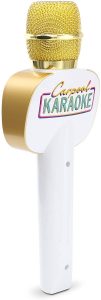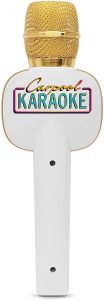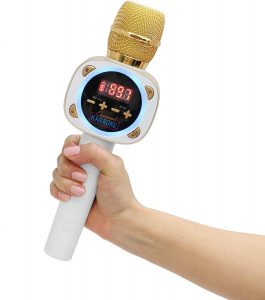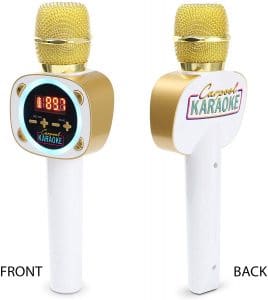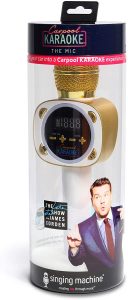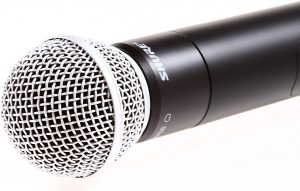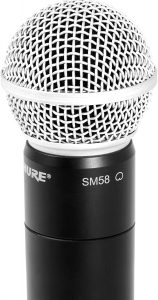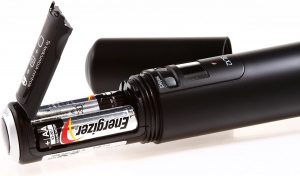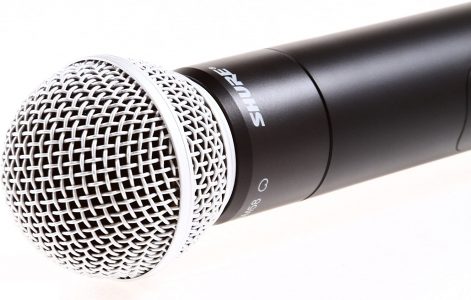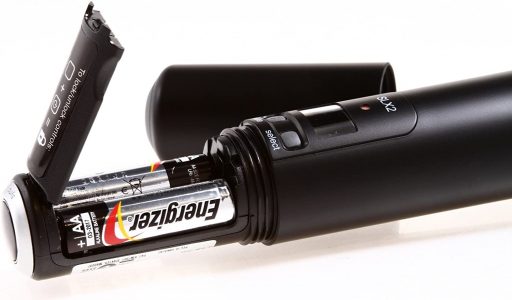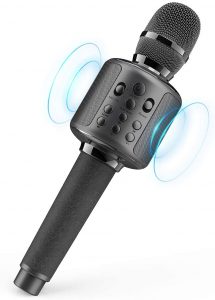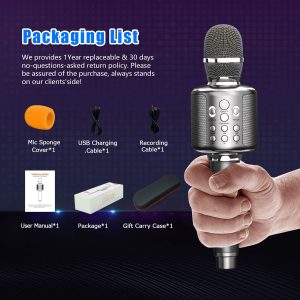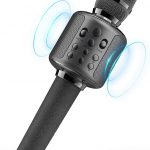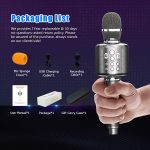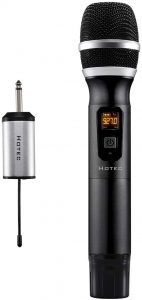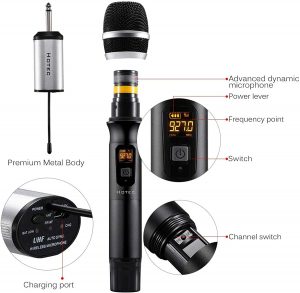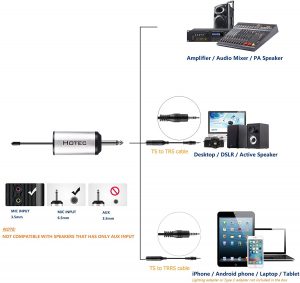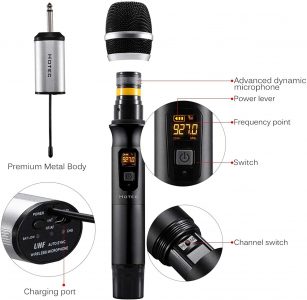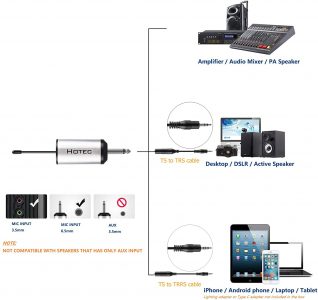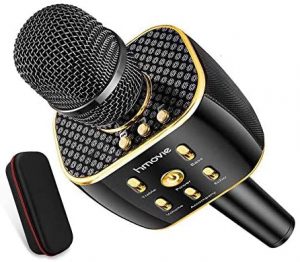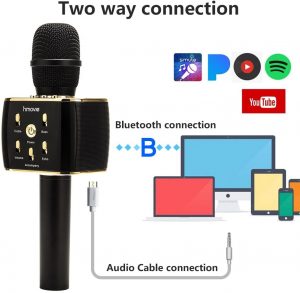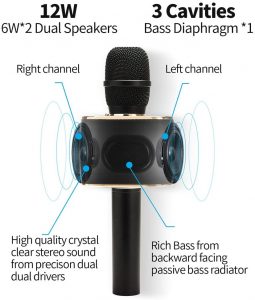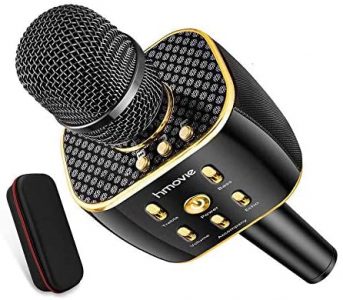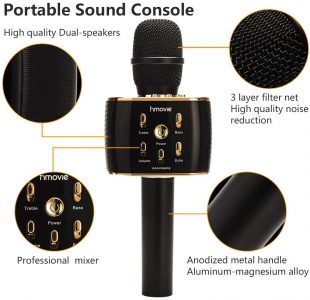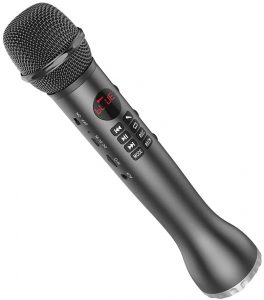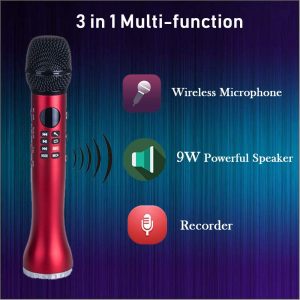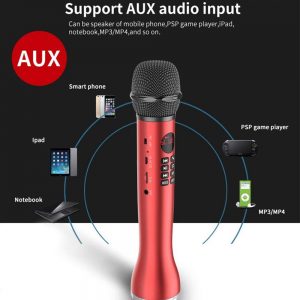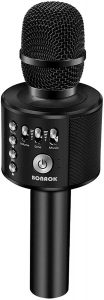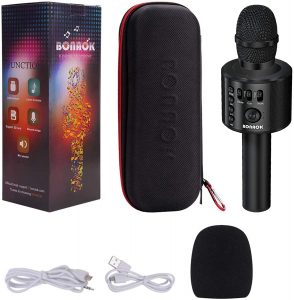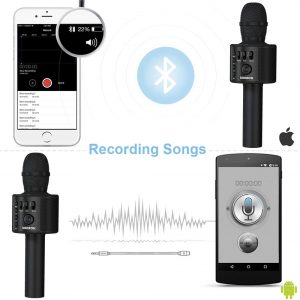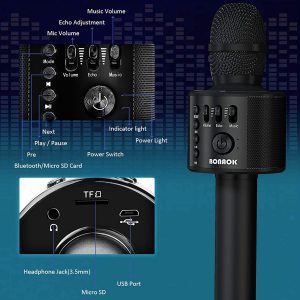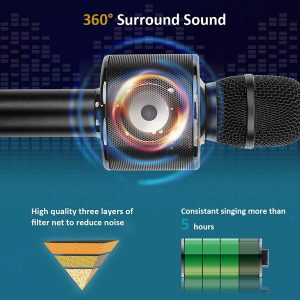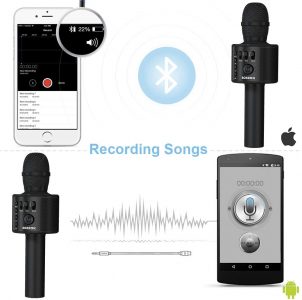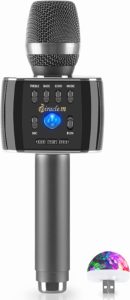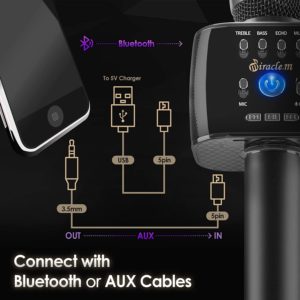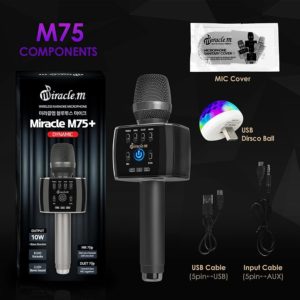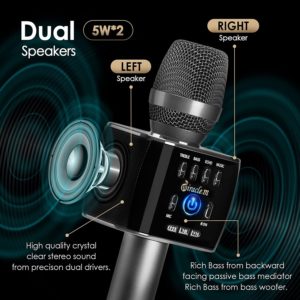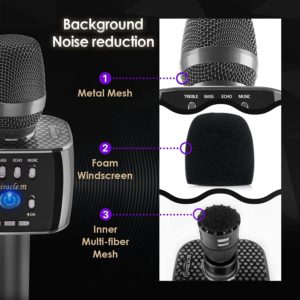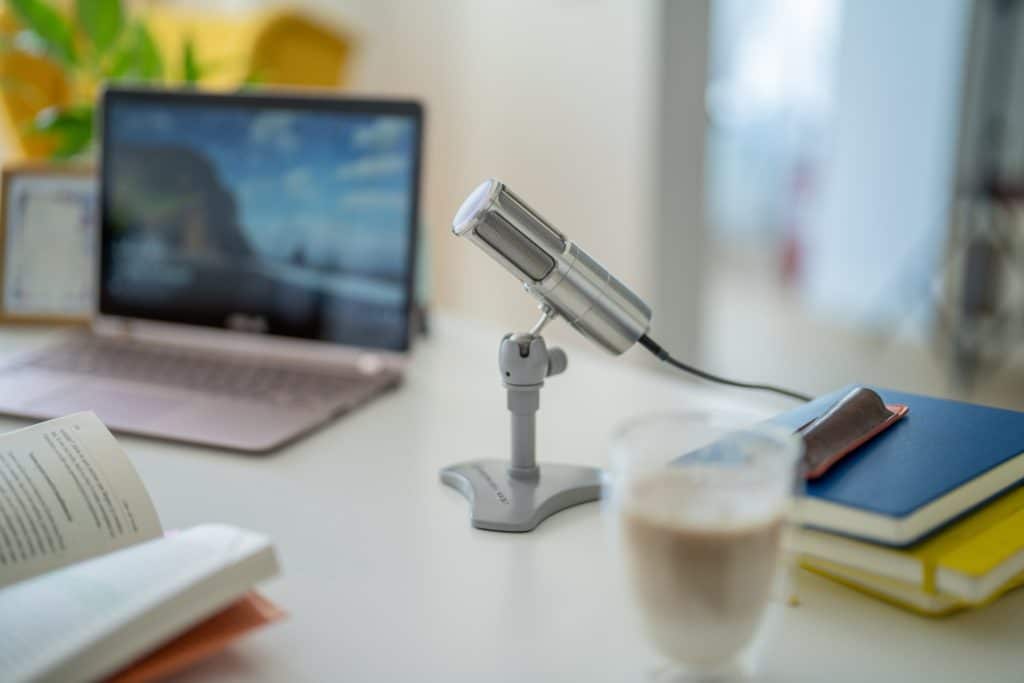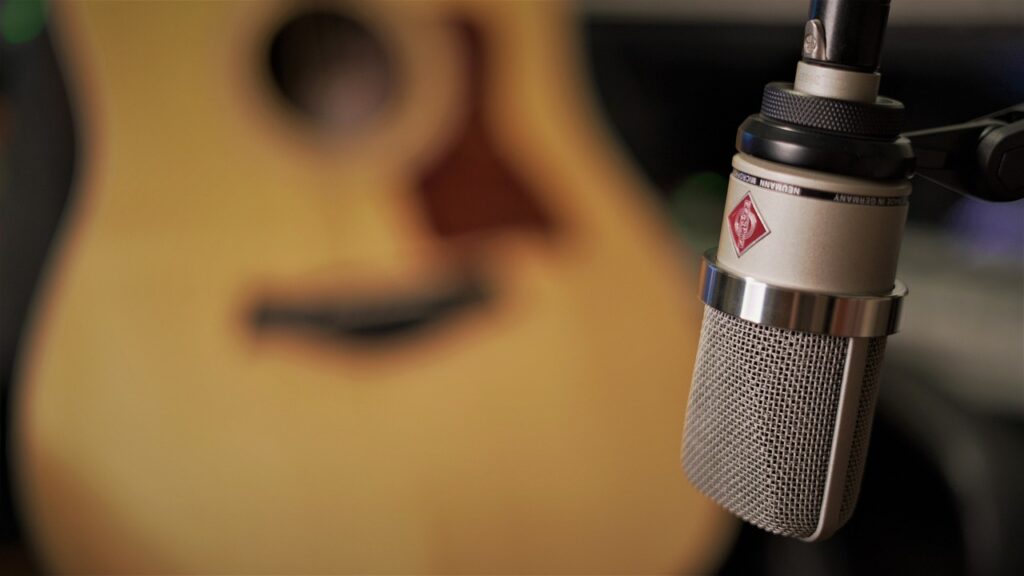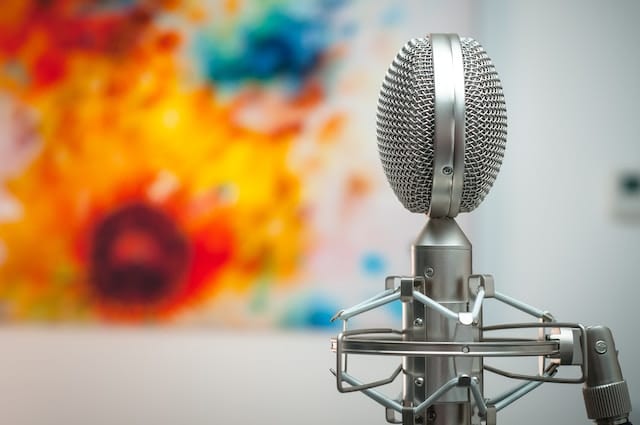Why karaoke mics are made for fun

Almost everyone loves to karaoke. And if you’re an avid karaoke star you’ll know how much difference the microphone you use can have on your singing voice. Some mics are made specifically for singing to give you that extra crispy sound to your amateur voice.
There are several benefits to using a karaoke microphone for your singing. Some of them include the following:
- Singing reduces shortness of breath. Hearing yourself over a mic will help you control your breath. This will be good for your singing as well as good for your breathing in general.
- Singing improves your posture since you naturally stand up straighter to get the right posture for your singing. Having a mic in your hand subconsciously makes you stand up straighter.
- Singing karaoke is also a great stress reliever. In general, singing makes people happier, which releases endorphins and that reduces stress.
- Karaoke is also a great way to improve your memory. Learning the lyrics to all your favorite songs forces you to use the memory part of your brain. It also forces you to focus on concentration and learning.
How to set up your karaoke mic
Setting up your karaoke microphone is not as complex as you might think. There are a few simple steps that will get you hooked up in no time.
Let’s have a look at those easy steps:
- Switch on the Bluetooth discovery on your microphone.
- On the TV settings, turn on Bluetooth settings and search for devices.
- When you see the microphone name on the screen, select “pair device”.
- Your smart TV and microphone are now connected.
When it comes to singing, keep the microphone about one to two inches from your mouth. The distance you sing from your microphone affects the resonance of your voice. When you want to enhance the lower frequencies of your voice, you’d then sing closer to the microphone.
Using the microphone correctly will make the singer’s vocals sound louder. Choosing the right type of microphone will capture the singer’s sound more efficiently.
Prices
On average, a karaoke mic shouldn’t set you back more than S100. In fact, all the models on our review list can easily be picked up for under S100. Of course, it would depend on promotions and offers each vendor offers at any given time.
Features to consider while buying the best karaoke microphone
When you finally pluck up the courage to take your shower singing one step further and venture into the world of karaoke, you’re going to need a real microphone. But, if you want your vocals to sound at their best, it’s crucial to invest in a top-quality microphone. Buying the right microphone is about a lot more than ordering the cheapest version from your favorite online store. Let’s have a look at some of the features you should consider when you’re shopping for the best karaoke microphone.
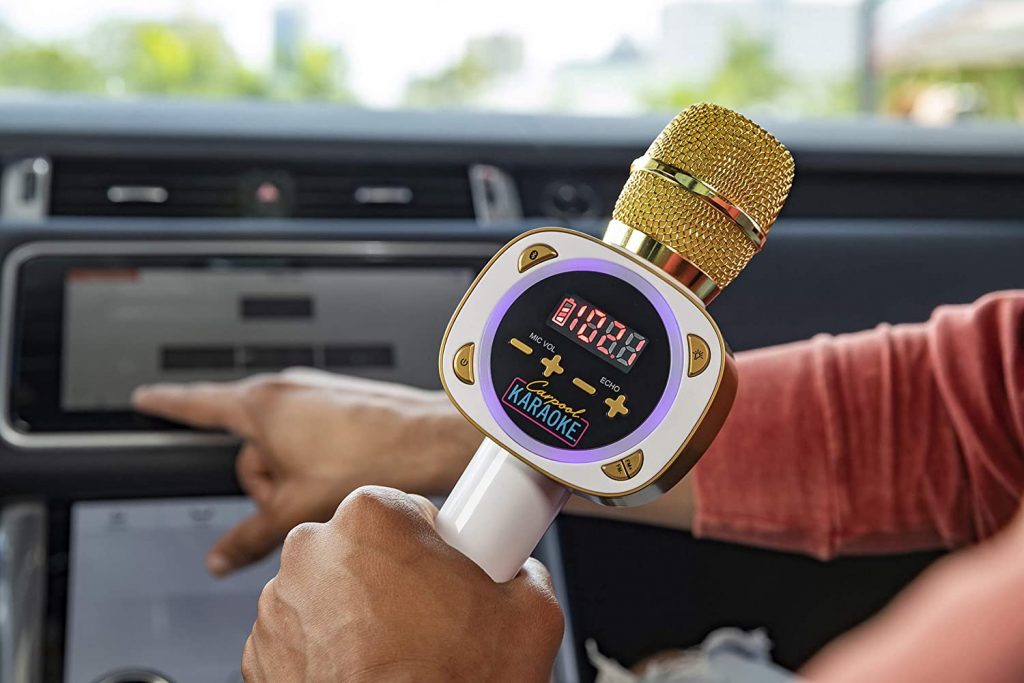
Mic types
As I’ve mentioned before, microphones might look similar, and perform similar functions, but they are actually very different. Generally, mics can be divided into three different categories. Let’s have a look at those categories and what they mean to your shortlist:
- Dynamic: Dynamic mics are the most common microphones used by most modern singers. These types of microphones capture strong, loud sounds and are excellent for singing live. If you’re only going to be doing karaoke shows in your living room with a group of your best friends, this is the ideal option for you. Our editor’s choice, the Singing Machine CPK545, is a fan favorite in the dynamic range.
- Condenser: Condenser mics are designed to pick up details. You’ll get the most accurate representation of your voice by using this type of microphone. That makes these mics perfect for studio recordings and settings. If you’re taking your karaoke to the next level, this is the right mic for you.
- Ribbon: Ribbon mics are for those of you who want to have that old school look about you while you’re belting out your most loved tunes. These are the old type of mics that have a figure 8 pattern. If you want to look like John Travolta in Pulp Fiction, this is the mic for you.
Pickup pattern
The pickup pattern or polar pattern as it’s sometimes referred to is the classification of how a microphone picks up sound directionally. The sensitivity to sound is based on how the microphone is orientated. The pickup pattern will determine how the microphone interprets the sound it picks up.
Ideally, you’d want to purchase a microphone that has a selectable pickup switch, which will allow you to choose between different pickup patterns. This will give you more flexibility over how your sound is interpreted. The Shure SLX2/SM58 has unidirectional polar patterns, meaning it will pick up sound from any direction and will give you great sound quality.
Weight
On average, a microphone weighs about 421g. Anything heavier than that might be uncomfortable to hold for long periods of time. When you’re reading through the specs of your shortlisted options, you want to stick to a parameter that has a minimum weight of 80g and a maximum weight of 860g.
Anything outside of those guidelines will be uncomfortable to handle. Dynamic microphones are usually a little heavier because of the magnets placed inside. Condenser microphones on the other hand can be heavy too as they are primarily used for recording which means they are placed on stands, so it doesn’t really matter how much they weigh. On our review list, the microphone models vary between 0.6lbs like the Shure SLX2/SM58 and 0.9lbs like the Miracle.M M75 Bluetooth Karaoke Microphone.
Connections
It’s important to know in advance where exactly you want to plug your microphone into. Are you going to plug it into your music system or your computer? Will you be using your smartphone, iPad or iPhone? Will you require a cable connection or would a Bluetooth connection be better? If you’re buying a microphone with Bluetooth connection, remember to ensure that your other device such as the car’s radio can also accommodate Bluetooth. How do USB connections factor into your microphone and your music device?
Is your chosen microphone compatible with these devices? What sort of cables or connections are required to make it all work in the simplest way possible, without hampering the fun you’re planning to have? Although headphone jacks and microphone jacks all use TRS or XLR connectors, their jacks are not the same. While headphone jacks send signals, mic jacks receive them. Save yourself the aggravation of having to exchange your mic or your device by considering your connections beforehand. The JeKaVis J-M01 model is an example of a mic that can be used as a wireless unit or with its plug-in cable. On some karaoke apps, it’s better to use the plug-in cable if you want a clearer sound.
Wireless option
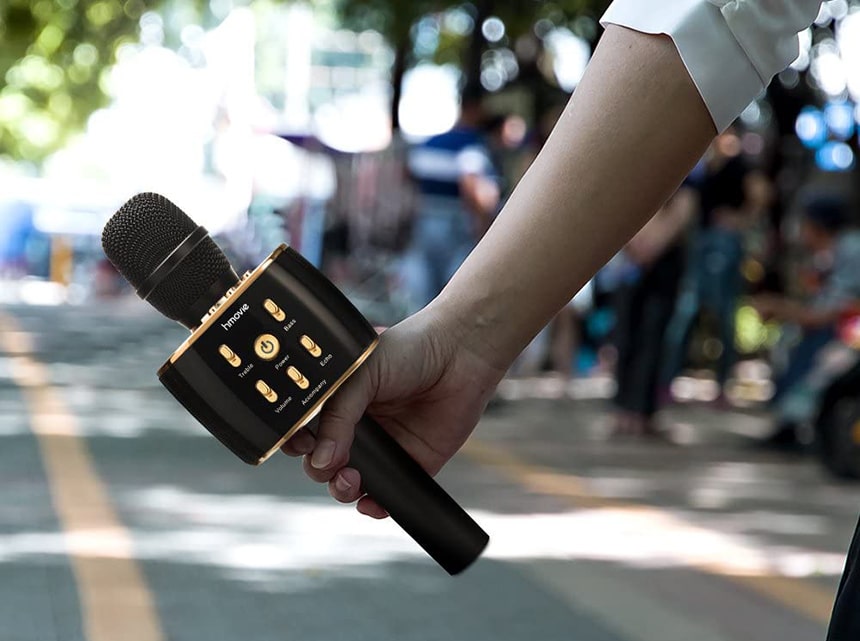
Another consideration to make when you’re shortlisting potential choices is going wireless. But what exactly does that mean in the world of microphones? The biggest advantage of using wireless microphones is the lack of wires. That means you won’t need to calculate wire distance and focus on not tripping over wires when you’re jamming. The only drawback might be a slight hindrance in voice quality. On our review list, we have the Hotec Handheld Wireless Microphone which comes with its own receiver. It’s a definite option to consider if you’re looking for a wireless mic.
Frequency
Frequency refers to the magnitude measurement of any given frequency assortment. Simply put, certain microphones will pick up more highs or more lows than others. In essence, not all microphones will sound the same. Frequency might be the main reason you prefer a certain microphone on your chosen device. If you’ve ever seen serious karaoke fanatics carrying their own microphones around instead of using the one provided, well, this is the reason. The goal here is to find a microphone that complements your unique vocals. Shure SLX2/SM58 is a brilliant example of a microphone that enhances your vocals, making you sound like the superstar you dream of being!
Guarantee
While some microphones are cheap and can be easily replaced, it’s wise to invest in a product that has some sort of warranty. A warranty on a product, no matter how cheap, is a sure way to identify the manufacturer’s confidence in their own product and replacing it is easier and cheaper because the brand may do it for free. On our review list we have the BONAOK Q37 model which not only has a 30-day money-back guarantee, but also a 1-year limited warranty.






